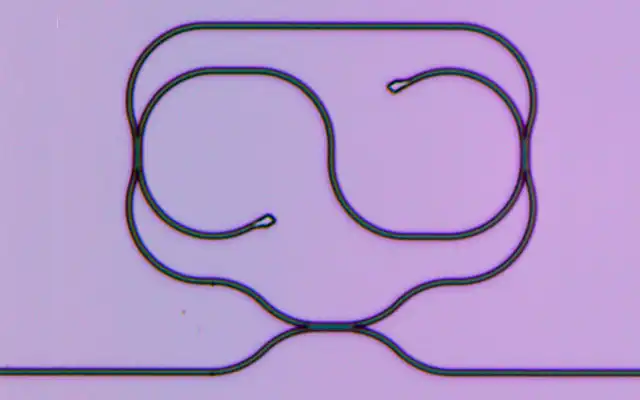


We make use of a phase-sensitive set-up to study the light transmission through a coupled waveguide-microdisk system. We observe a splitting of the transmission resonance leading to an unbalanced doublet of dips. The experimental data are analyzed by using a phasor diagram that correlates the real and the imaginary parts of the complex transmission. In addition, detailed features are evidenced by a complex inverse representation of the data that maps ideal resonances into straight lines and split resonances into complicated curves. Modeling with finite element method simulations suggests that the splitting and the unbalance is caused by an induced chirality in the propagation of the optical fields in the microdisk due to the interplay between the stochastic roughness and the intermodal dissipative coupling, which yield an asymmetric behavior. An analytical model based on the temporal coupled mode theory shows that both a reactive and a dissipative coupling of the counter-propagating modes by the surface roughness of the ring resonator are required to quantitatively reproduce the experimental observations and the numerical simulations.

We study light transmission and reflection from an integrated microresonator device, formed by a circular microresonator coupled to a bus waveguide, with an embedded S-shaped additional crossover waveguide element that selectively couples counter-propagating modes in a propagation-direction-dependent way. The overall shape of the device resembles a “taiji” symbol, hence its name. While Lorentz reciprocity is preserved in transmission, the peculiar geometry allows us to exploit the non-Hermitian nature of the system to obtain high-contrast uni- directional reflection with negligible reflection for light incident in one direction and a significant reflection in the opposite direction.

We report on the modeling, simulation, and experimental demonstration of complete mode crossings of Fano resonances within chip-integrated microresonators. The continuous reshaping of resonant line shapes is achieved via nonlinear thermo-optical tuning when the cavity-coupled optical pump is partially absorbed by the material. The locally generated heat then produces a thermal field, which influences the spatially overlapping optical modes, allowing us to alter the relative spectral separation of resonances. Furthermore, we exploit such tunability to continuously probe the coupling between different families of quasi-degenerate modes that exhibit asymmetric Fano interactions. As a particular case, we demonstrate a complete disappearance of one of the modal features in the transmission spectrum as predicted by Fano [Phys. Rev. 124, 1866 (1961)]. The phenomenon is modeled as a third-order nonlinearity with a spatial distribution that depends on the stored optical field and thermal diffusion within the resonator. The performed nonlinear numerical simulations are in excellent agreement with the exper- imental results, which confirm the validity of the developed theory.